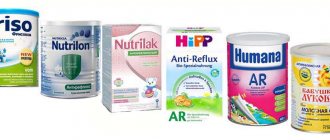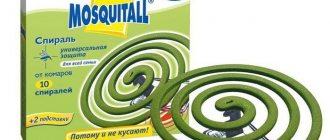Every parent who is actively interested in and involved in the development of their child knows firsthand about the benefits and significance of infant massage. This is not only a means of strengthening the body, complex development or prevention/treatment of diseases. Massage also allows you to establish tactile and psychological contact with your baby and convey your feelings to him through touch.
But in order not to harm the baby’s delicate and sensitive skin, it is worth purchasing baby oil for massage. And this is where parents may have difficulties: what oils are available, are they all equally suitable for massage, which manufacturer should be preferred, etc. Let's try to understand these issues together.
What should baby oil be like for massage?
Manufacturers of cosmetic products produce a wide range of products for baby skin care. Each has its own composition and purpose. But they all must have a moisturizing, nourishing effect and meet certain requirements:
- Have a natural composition.
- Does not contain dyes or fragrances.
- Be hypoallergenic.
- Rub well into the skin.
- Suitable for the child's age.
If the oil is used for a newborn, it should be heated in a water bath.
In the pharmacy you can see a variety of massage products, which include petroleum jelly, mineral, vegetable, and essential oils.
The benefits of Provencal product
A plant product rich in fatty acids and vitamins has been used in Mediterranean countries for a long time as a food additive and cosmetic product.
The olive product contains:
- Vitamin E - helps to better absorb organic substances of groups A and K. The complex of these vitamins improves metabolic processes, restores the epidermis of the skin and rejuvenates the body.
- Polyphenols.
- Monounsaturated fatty acids normalize blood cholesterol levels and participate in the process of bone tissue formation in children.
- Esters of oleic acid.
- Antioxidants and other vitamins have a negative effect on free radicals, prevent cell mutation, which reduces the risk of cancer in some organs.
Olive fat is used in cooking and dietetics, cosmetology, medicine and the soap industry. In medicine it helps to treat:
- gout;
- arthritis;
- bruises;
- acute muscle pain;
- sprained joints;
- swelling of the skin.
In cosmetology, a natural herbal product is used externally for massage, applications, compresses, wraps and as a mask for different skin types.
Vaseline oil for baby massage
It is liquid paraffin, which our grandmothers used and modern parents continue to use. Its beneficial qualities are as follows:
- the oil has no taste or smell;
- absence of allergic reactions;
- can be used from birth.
Apply a small amount so as not to clog pores and allow the skin to breathe.
Vaseline oil for a newborn: what is useful?
Benefits of olive oil for massage
Using olive oil for massage gives skin beauty, health and youth. After the first procedures, skin color and epidermal structure improve. The skin becomes soft, elastic and velvety to the touch. During the massage, the oily substance penetrates the skin pores, improves protective functions, and enhances the production of histamine, which has a positive effect on muscle tissue. Also, olive oil for massage removes toxins and toxic substances from the layers of the epidermis, regulates the functioning of the glands responsible for the formation of sweat and fat deposits.
Olive oil massage performs the following functions:
- Removes dead cells of the upper layer of the epidermis.
- Restores skin, heals microcracks and other injuries.
- Maintains the water balance of the skin and reduces dryness of the epidermis.
- Reduces inflammatory processes of the skin.
- Prolongs skin youth.
- Reduces stretch marks and helps get rid of cellulite.
- Relieves pain due to osteochondrosis and salt deposits.
- Relaxes the body, tones the muscles, as a result of which the nervous system calms down.
Massage with olive oil is a pleasant and beneficial procedure. The hands of the person doing the massage gently glide over the body, kneading areas of the skin, causing blood to circulate faster through the circulatory system and additionally supply the body with oxygen.
It is useful to massage with olive oil for newborn children, children with weak immune systems and the elderly.
Vegetable oil for baby massage
Extracted from natural plant products. There are many varieties, but each has its own composition and purpose:
- Olive oil contains a vitamin complex, linoleic and oleic acid. Has a softening and strengthening effect.
- Peach oil nourishes the skin well, does not cause allergic rashes, and can be used for newborns.
- Apricot oil helps activate the immune and nervous systems, and also increases muscle tone.
- Wheat oil is especially useful for dry skin, as it moisturizes well and prevents flaking.
This is not the entire list of oils that are suitable for children's massage, but it is worth noting that mustard, peanut and camphor oils are strictly prohibited for use on children .
Types of massage oils for children
Modern parents have access to a large number of different types of massage oils. But if we talk about the basic components of these funds, then there are not so many of them.
Vaseline oil
This proven product is liquid paraffin, which has been used for centuries and continues to be used in children's massage. It's good because:
- has no smell;
- has no taste;
- does not cause allergies;
- has moisturizing and healing properties;
- goes well with other types of oils;
- can be used from birth.
Vaseline oil should be applied in a very thin layer so as not to clog the pores.
Mineral oil
Oils of this species group are produced from petroleum. They are also recommended for use in baby massage due to their positive properties:
- soften and moisturize the skin;
- safe;
- have medicinal properties (for example, for eczema);
- increase the protective function of the skin of premature babies, helping to retain moisture;
- Ideal for post-swim massage.
When using mineral oils, you should pay attention to the baby's skin sensitivity test and become familiar with the shelf life and use of oils of this type.
Vegetable oil
The largest number of varieties of massage oils for children (and not only) are represented by the group of vegetable oils. They are obtained through the process of squeezing from natural plant products.
But just as each plant has its own properties and unique composition, each type of oil has its own characteristics and recommendations for use:
- olive oil – rich in minerals and vitamins, linoleic and oleic fatty acids, softens the skin, strengthens the protective function of the skin, is well absorbed, baby olive oil is most often used for massages;
- peach oil – moisturizes the skin well, prevents skin diseases, can be used for newborns;
- apricot oil – increases muscle tone, activates the immune and nervous systems;
- wheat oil – actively moisturizes dry skin, removes flaking;
- coconut oil – moisturizing and antiseptic, hypoallergenic, used only in diluted complex form.
It is difficult to list all types of vegetable oils that can be used for infant massage, but it should be noted that mustard, peanut and camphor oils are strictly not recommended for children.
Despite the naturalness of the product, you should not use any vegetable oil if your child has skin diseases or rashes.
Essential oil
Oils that promote not only physical but also psychological and emotional relaxation include essential oils. True, like baby oil, they should be used with caution and after consultation with a pediatrician. Essential oils for babies under two weeks of age are not recommended for use at all. From a month you can start using chamomile, lavender, rose or dill essential oils, and later - oils with bergamot, fennel, patchouli. After a massage with these oils, babies are calmer and sleep better.
Using oils for baby massage
Giving your baby a massage using various oils simplifies this process and relaxes the baby. Most likely, everyone has their own opinion about which oil is best for baby massage: the oil is easily and quickly absorbed into the skin;
remains on the skin, providing good glide and making this process much easier.
Some moms prefer baby mineral oils, while others choose a specific plant oil. There are some that are more easily absorbed into the skin. However, there is a list of some oils and creams that are best not to use, as they can cause allergies or irritation to the baby's skin.
These include:
Mustard oil, since during its processing contaminated seeds may get in;
Peanut. If it is not refined, the proteins contained in this oil can cause an allergic reaction on the baby's skin. Pure and refined peanut butter is difficult to find; liquid cream. It contains detergents that may irritate children's skin;
Vegetable oils high in linoleic acid can be gentle on baby skin. Linoleic acid is an essential fatty acid that helps protect baby's skin. Plants that typically contain high levels of linoleic acid include:
- grape seed oil;
- safflower oil;
Olive oil selection criteria
For cosmetic purposes, it is better to buy an unrefined product, that is, cold-pressed, labeled as “extra virgin” and with a date on the label indicating the time of the olive harvest. There must also be a DOP inscription, which means that the product is made from the fruits of elite varieties of olive trees and packaged in the place where the crop grows.
Take into account when choosing vegetable fat:
- Product price. Natural fresh oil of the highest or first grade is expensive. The product is bottled in dark-colored sealed bottles to prevent oxidation of fatty acids when exposed to sunlight.
- Glass containers are used for natural plant matter.
- The taste of the Provencal product is slightly bitter, and the color is yellow-green. A rich yellow or grayish color indicates that the vegetable fat does not meet the declared quality.
- Starnu-producer. It is better to choose vegetable fat produced in Spain.
- They check the quality of the plant matter by carefully studying the structure of the contents. The fresh product has sediment at the bottom of the container, the oil becomes slightly transparent, and the consistency of the chilled Provençal liquid becomes dense and viscous, since fats harden at a temperature of + 3°C.
Olive oil storage conditions
Considering that the product is not cheap, and in order not to harm the body with spoiled oil, you need to store the Provençal liquid correctly. Provençal fat, like other vegetable fats, is stored in a dark place where sunlight does not penetrate. In the original container, the oily substance retains its positive properties and nutritional value for three years.
From the moment the factory plug is removed, the oil must be used within six months. Storage temperature is room temperature. Do not keep the bottle with the product close to the hob, stove, or oven. After use, the cork is tightly closed so that the oily liquid does not absorb odors and aromas.










